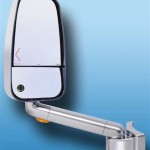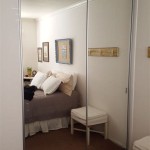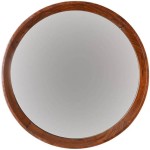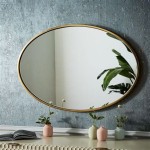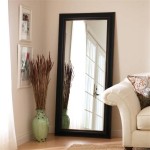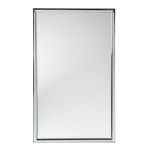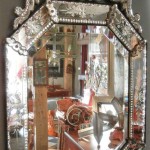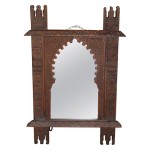How to Cover a Mirror in Your Bedroom: Creative and Practical Solutions
Mirrors can be a beautiful addition to any bedroom, adding light and creating the illusion of more space. However, sometimes mirrors can feel intrusive or disruptive, particularly in a space designed for rest and relaxation. This article explores several methods for covering a bedroom mirror, from temporary fixes to more permanent solutions, offering options to suit various styles and budgets.
Using Fabric to Cover a Mirror
Fabric offers a versatile and often cost-effective way to conceal a mirror. The chosen fabric can complement the existing decor and be easily changed to refresh the room's aesthetic.
- Measuring the Mirror: Accurate measurements are crucial. Ensure the fabric is large enough to fully cover the mirrored surface, adding extra length for wrapping or securing.
- Fabric Selection: Choose a fabric that suits your style and the room's ambiance. Light, airy fabrics create a softer look, while heavier materials offer more privacy and light blockage.
- Attachment Methods: Several options exist for attaching fabric to a mirror. These include adhesive strips, which offer easy removal without damaging the mirror, or more permanent solutions like staples or tacks for a framed mirror.
- Creating a Decorative Finish: Adding embellishments such as ribbons, trim, or decorative tacks can enhance the appearance and tailor the fabric covering to the room's aesthetic.
Covering a Mirror with Removable Wallpaper
Removable wallpaper provides a stylish and relatively easy way to cover a mirror temporarily. The wide array of patterns and textures available allows for creative expression and seamless integration with existing room decor.
- Surface Preparation: Cleaning the mirror surface thoroughly is essential for proper adhesion. Use a glass cleaner to remove any dust or residue.
- Accurate Measurement and Cutting: Measure the mirror precisely and cut the wallpaper accordingly, leaving a slight margin for adjustments.
- Applying the Wallpaper: Carefully peel the backing from the wallpaper and apply it smoothly to the mirror, working from top to bottom to avoid air bubbles.
- Smoothing and Finishing: Using a smoothing tool or clean cloth, press out any air bubbles and ensure the wallpaper adheres firmly to the mirror surface.
Utilizing Decorative Screens or Panels
Freestanding screens or decorative panels offer a flexible and attractive solution for concealing a mirror. They can be easily moved and repositioned as needed.
- Selecting the Right Size: Choose a screen or panel that is large enough to completely obscure the mirror from view.
- Style Considerations: Select a style that complements the room's decor, considering materials, colors, and patterns.
- Placement Strategies: Position the screen or panel strategically in front of the mirror, ensuring it is stable and secure.
Using Window Film for a Frosted Effect
Applying window film can create a frosted or etched glass effect on the mirror, obscuring the reflection while still allowing light to pass through.
- Mirror Preparation: Thoroughly clean the mirror surface with a glass cleaner.
- Film Application: Follow the manufacturer's instructions carefully for applying the window film to the mirror. This typically involves spraying the mirror with a solution, applying the film, and smoothing out any air bubbles.
- Trimming Excess Film: Carefully trim any excess film around the edges of the mirror for a clean finish.
Repurposing Artwork or Decorative Objects
Existing artwork or decorative objects can be creatively repurposed to cover a mirror, adding a personalized touch to the room.
- Choosing Suitable Items: Consider using large pieces of artwork, tapestries, or decorative panels that are proportionate to the mirror's size.
- Secure Attachment Methods: Use appropriate hanging hardware to securely attach the items to the wall, ensuring they completely cover the mirror surface.
Building a Custom Cover
For a more permanent solution, consider building a custom cover specifically designed for the mirror's dimensions. This allows for greater control over the final appearance and functionality.
- Material Selection: Choose a material that aligns with the room's aesthetic, such as wood, plywood, or decorative panels.
- Construction and Attachment: Construct a frame or panel that fits over the mirror and securely attach it to the wall or the mirror frame itself.
- Finishing Touches: Consider adding decorative elements like paint, fabric, or wallpaper to enhance the cover's appearance.
Utilizing Plants Strategically
Strategically placed tall plants or climbing vines can partially or fully obscure a mirror while adding a natural and vibrant element to the room.
- Plant Selection: Choose plants that thrive in the bedroom environment and offer the desired level of coverage.
- Placement and Support: Position plants in front of the mirror, using shelves, stands, or hanging planters as needed for support and stability.

Modify My House On Linkedin How To Cover Mirror In Bedroom Style 4 Easy Diy Steps

3 Ways To Cover Mirrored Walls Wikihow

How To Cover A Mirror In Your Bedroom Wall Decor

Mirrors Feng Shui In The Bedroom

How To Cover Mirrored Doors With Cornstarch Closet Door Makeover Mirror Bifold

3 Ways To Cover Mirrored Walls Wikihow

Mirrors Should Be Covered With Curtain Saral Vaastu Call 91 9321333022
:max_bytes(150000):strip_icc()/GettyImages-1038433622-5bd425f3ce084b82b79a2ae05da290bf.jpg?strip=all)
Feng Shui Tips For A Mirror Facing The Bed

Why Are People Covering Their Bedroom Mirrors Overnight

Where To Put A Mirror In Your Bedroom Feng Shui Tips Worst Room

